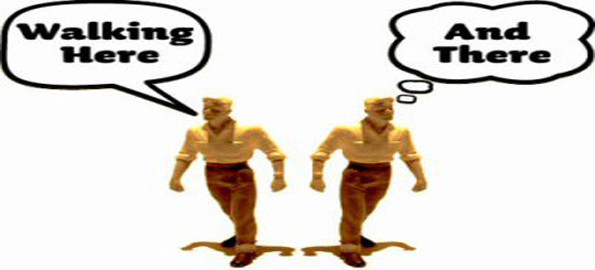Reduplicative Paramnesia
What is it?

Reduplicative paramnesia is the delusional belief that a place or location has been duplicated, existing in two or more places simultaneously, or that it has been 'relocated' to another site. It is one of the delusional misidentification syndromes and, although rare, is most commonly associated with acquired brain injury, particularly simultaneous damage to the right cerebral hemisphere and to both frontal lobes.
The term reduplicative paramnesia was first used in 1903 by neurologist Arnold Pick to describe a condition in a patient with suspected Alzheimer's disease who insisted that she had been moved from Pick's city clinic, to one she claimed looked identical but was in a familiar suburb. To explain the discrepancy she further claimed that the medical staff worked at both locations.
In retrospect, however, the phenomenon has been found to have been first reported by the Swiss naturalist Charles Bonnet in 1788, who described a woman who also had what would now be called Cotard delusion. Henry Head and two other researchers later reported on soldiers who had the delusional belief that their hospital was located in their home town, although, in these cases, traumatic brain injury seemed to be the most likely cause.
It wasn't until 1976 that serious consideration was given to the disorder, when three cases were reported by a group of collegues. They not only described striking reduplication syndromes in their patients, but also attempted to explain the phenomena in terms of the neurocognitive deficits also present in the patients. This was one of the first attempts to give a neuropsychological explanation for the disorder.
Signs and Symptoms
- Confabulation
- Speech disorder(paraphasia)
- Disorientation
- Denial of illness
- Autoscopy
- Heautoscopy
- Out-of-body experiences
- Amnesia
Treatments
There are, at present, no effective pharmacological treatments for amnesic disturbances of vascular cause. Whether some antidepressants would facilitate recover, while diazepan and haloperidol would be detrimental remains to be tested in clinical studies. Methylphenidate was reported to be of benefit in a single trial.
Drugs with anticholinergic effects are better avoided. Cholinergic agents can conceivably be useful, but no trials have yet been completed. Several behavioural memory retraining programs are available at memory clinics, but their long-term ecological efficacy remains to be proved. Various treatments have been tried in clinical trials, though how patients responded to treatment was varied.
Causes
Reduplicative Paramnesia is most commonly found in individuals who have suffered severe brain trauma and neurological disorders, such as hemorrhage, tumours, strokes, encephalopathy and dementia. Also, a range of psychiatric disorders can cause a patient into a confused and amnesic state in which can lead to the Paramnesia becoming present.
It is believed that the disorder is caused by a disruption to the parts of the brain that deal with conscious memory and familiarity, like damage to the frontal lobes and right hemisphere. Damage to the right hemisphere is linked to Anosognosia in patients. Anosognosia is where a person is suffering from a disability, but deny or seem unaware they have it. Also, it is suggested that poor memory integration and visuospatial disorientation can be produced due to the ventral stream being damaged. The ventral stream of the visual system is what connects the visual cortex to the areas in the temporal lobes. As these areas interact with the frontal lobes during memory formation and retrieval, it is suggested that damage to this area could lead to the condition.
